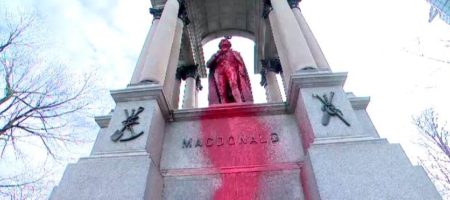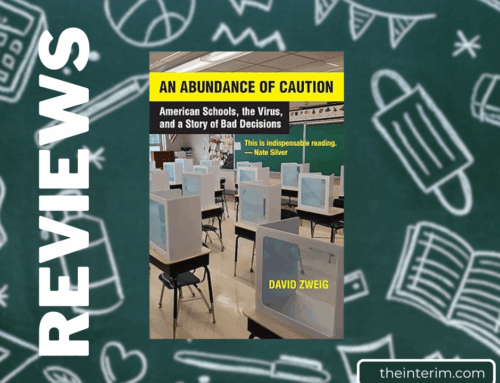Gerry Nicholls – Commentary:
 It’s odd how inanimate objects can sometimes generate animated debates.
It’s odd how inanimate objects can sometimes generate animated debates.
Consider the passionate arguments currently taking place in various parts of the world over sculptures made of stone or bronze.
In the United States, for instance, there were recently emotional battles waged over whether or not to remove statues of Confederate war heroes, while in Britain there’s an ongoing controversy regarding any statues commemorating historical figures associated with imperialism or slavery or racism (even Winston Churchill’s statue is coming under such scrutiny).
Of course, Canada is not immune to this anti-statue trend.
For example, the poor statue of Egerton Ryerson, a 19th century educator who helped create Canada’s public school system, was recently defaced and toppled by an angry mob, while certain Canadian municipalities have decided to unceremoniously remove from public view statues of Canada’s first prime minister and a Father of Confederation, Sir John A. Macdonald.
Needless to say, such moves have triggered heated arguments.
For many Canadians both Ryerson and Macdonald have become symbols of Canada’s infamous residential school system, and thus they view their statues as hated abominations, while many other Canadians believe, with equal passion, that such statue desecrations disrespect our country’s history and argue we should continue to honor the people who helped build Canada, despite their flaws.
It’s a debate that might even spill over into the next federal election.
Mind you, it should be noted that there’s nothing much new about such arguments.
As a matter of fact, disputes over the fate of statues have been around for a long, long time.
To take one example, back in the days of ancient Rome, after the Roman state officially gave its sanction to Christianity, zealous Christians would often take great delight in smashing the statues of pagan gods.
Not surprisingly, this act of vandalism affronted pious Roman pagans, who likely argued along the lines of “Hey, we stopped feeding you to the lions, so please would you at least respect our religious traditions.”
To which Christians would likely respond, “Sorry, but those statues are symbols of pagan idolatry and are thus an offence to God and a sin! They must go!”
A much more recent statue debate occurred in late 1890s England, when the British government at the time wanted to erect a statue of Oliver Cromwell, the 17th century general and statesman who helped topple King Charles I. Cromwell was popular among English Liberals, who saw him as a champion of Parliament and as a steadfast opponent to monarchial tyranny, but he was likewise hated by Conservatives who saw him as an anti-royalist and by the Irish, who remembered him as a brutal conqueror of their land.
Hence parliamentary debates over his statue become quite acrimonious.
Eventually, the statue was erected but only because a former Liberal prime minister (Lord Rosebery) paid for it with his own private funds. It still stands today, and it still provokes controversy.
(FYI, I got this statue information from a podcast called The Rest is History. Highly recommended.)
Anyway, the point I’m making here is, we should never underestimate the power of an inanimate symbol to motivate and activate. Statues, since they are so visible and so tangible, make for excellent props when promoting or opposing ideological or religious agendas.
The other aspect about statues is that, while they remain forever the same, public attitudes and moral sentiments are continually evolving and changing over time.
So, someone who was perceived as a hero 100 years ago, might be perceived as a villain today.
Canada’s Liberals should keep this in mind, before they erect a statue of Justin Trudeau.
Gerry Nicholls is a communications consultant.




